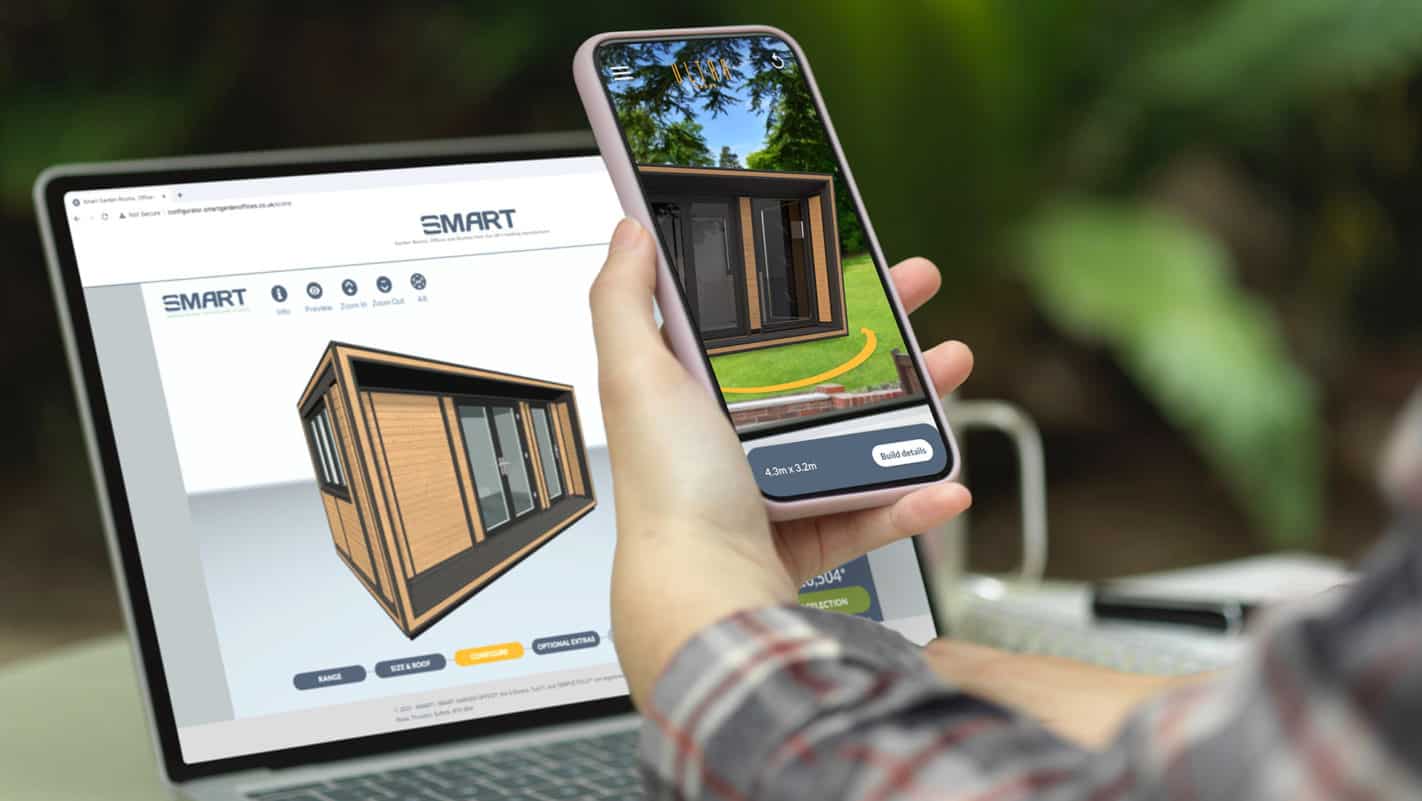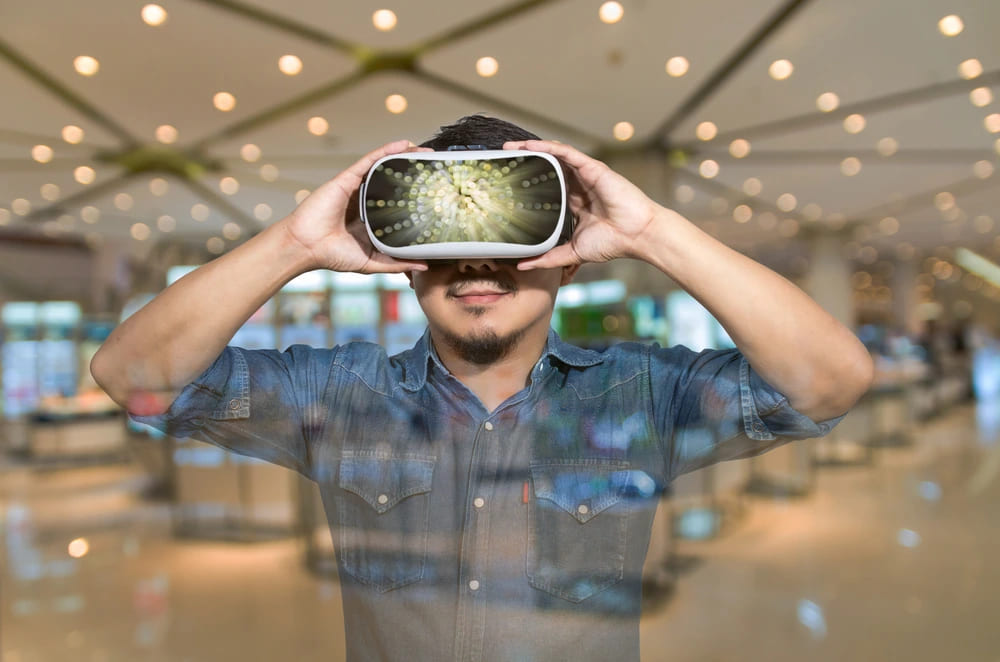
Virtual Reality (VR) has transcended the realm of gaming and entertainment to revolutionize the way we shop online. In this comprehensive exploration, we’ll delve into the exciting potential of VR in e-commerce, uncovering its possible applications, benefits, and impact on the future of online shopping.
Understanding Virtual Reality in E-commerce

What is Virtual Reality?: Virtual Reality is a simulated experience that can be similar to or completely different from the real world. Using VR technology, users can interact with computer-generated environments and objects in a realistic and immersive way, often through the use of specialized headsets and controllers.
The Rise of E-commerce: E-commerce has experienced exponential growth in recent years, with more consumers turning to online shopping for convenience, variety, and accessibility. However, traditional e-commerce platforms often lack the immersive and interactive elements of in-person shopping experiences.
Possible Applications of Virtual Reality in E-commerce

Virtual Showrooms: VR allows e-commerce retailers to create virtual showrooms where customers can explore products in a three-dimensional space. By donning a VR headset, shoppers can browse through aisles, examine products up close, and visualize how they would look in real life, enhancing the online shopping experience.
Virtual Try-On: One of the most promising applications of VR in e-commerce is virtual try-on for clothing, accessories, and cosmetics. With VR technology, shoppers can virtually try on clothing items, experiment with different styles and colors, and see how they fit and look from every angle, reducing the need for returns and improving customer satisfaction.
Interactive Product Demonstrations: VR enables e-commerce retailers to create interactive product demonstrations that provide customers with a hands-on experience before making a purchase. For example, a furniture retailer could use VR to allow customers to virtually place furniture items in their own homes and see how they would look in different spaces.
Immersive Shopping Events: VR can be used to create immersive shopping events and experiences that bring customers together in virtual environments. E-commerce retailers can host virtual fashion shows, product launches, and exclusive shopping events, allowing customers to interact with brands and products in new and exciting ways.
Benefits of Virtual Reality in E-commerce

Enhanced Engagement: VR provides a highly engaging and immersive shopping experience that captures customers’ attention and keeps them actively involved in the shopping process. By offering interactive and visually stunning experiences, e-commerce retailers can increase customer engagement and drive sales.
Increased Conversion Rates: Virtual Reality has the potential to increase conversion rates by providing customers with a more realistic and personalized shopping experience. By allowing customers to try on products virtually and visualize how they would look in real life, VR reduces uncertainty and hesitation, leading to higher conversion rates.
Reduced Returns: Virtual Try-On solutions powered by VR technology can help reduce returns by enabling customers to make more informed purchasing decisions. By allowing customers to see how products fit and look before buying, e-commerce retailers can minimize the likelihood of returns due to size or style issues.
Differentiation and Brand Image: E-commerce retailers that embrace Virtual Reality differentiate themselves from competitors and enhance their brand image as innovative and customer-centric. By offering cutting-edge VR experiences, brands can attract tech-savvy customers and position themselves as leaders in the e-commerce industry.
Challenges and Considerations

Technology Adoption: While Virtual Reality holds tremendous potential for e-commerce, widespread adoption of VR technology among consumers may take time. E-commerce retailers must invest in educating consumers about the benefits of VR and overcoming barriers to adoption, such as the cost of VR headsets and concerns about privacy and security.
Content Creation: Creating high-quality VR content for e-commerce applications requires specialized skills and resources. E-commerce retailers must invest in content creation tools and talent to develop immersive and interactive VR experiences that meet the needs and expectations of their customers.
Integration with Existing Platforms: Integrating VR capabilities into existing e-commerce platforms and workflows can be challenging. E-commerce retailers must ensure seamless integration between VR experiences and their existing product catalogs, payment systems, and customer support infrastructure to provide a cohesive shopping experience.
Future Trends and Opportunities

Mobile VR: The proliferation of mobile VR headsets, such as the Oculus Quest and Samsung Gear VR, presents new opportunities for e-commerce retailers to reach a broader audience. Mobile VR allows customers to access VR experiences using their smartphones, making VR more accessible and convenient for everyday shoppers.
Social VR: Social VR platforms, such as Facebook Horizon and VRChat, offer e-commerce retailers the opportunity to create virtual shopping communities and engage with customers in new and innovative ways. By hosting virtual events and experiences on social VR platforms, e-commerce retailers can build brand loyalty and foster deeper connections with their customers.
Conclusion: Embracing the Future of E-commerce with Virtual Reality
Virtual Reality has the potential to transform the e-commerce industry by providing customers with immersive, interactive, and personalized shopping experiences. From virtual showrooms and try-on solutions to interactive product demonstrations and shopping events, VR opens up new possibilities for e-commerce retailers to engage with customers and drive sales. By embracing Virtual Reality and investing in innovative VR solutions, e-commerce retailers can stay ahead of the curve, differentiate themselves from competitors, and deliver unforgettable shopping experiences that delight customers and drive business growth.




